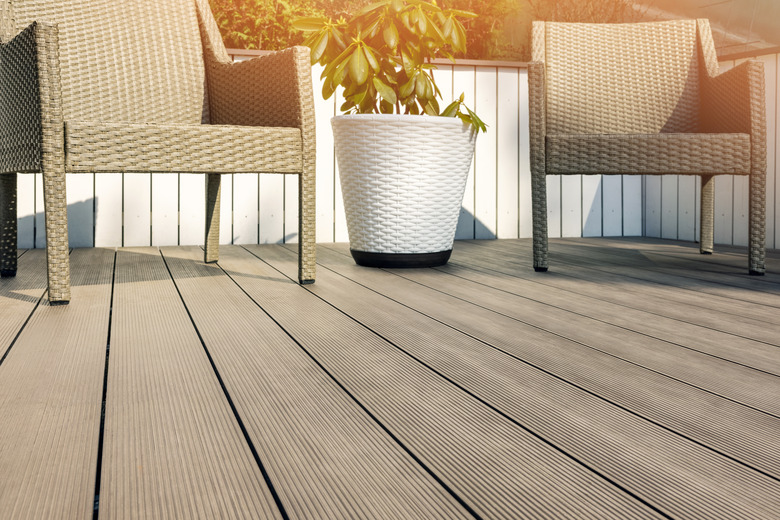Can You Paint Composite Decking?
We may receive a commission on purchases made from links.
Homeowners often choose composite decking for its maintenance-free quality, but what happens when the original color fades or boards become stained by spills? It's natural to wonder if you can paint the composite decking. Yes, you can paint composite decking in some cases, as long as the deck is properly cleaned, prepped, and primed. However, not all composite decking is a candidate for painting.
Should You Paint Composite Decking?
Should You Paint Composite Decking?
Older composite decking, especially if it was made before 2010, is usually the best candidate for painting. If you have a newer version, it likely has a PVC cap or shell that won't let paint stick. You can tell if it has the shell by looking at the cut end. Newer types that won't accept paint usually have a gray or brown core, which is the composite material, surrounded by the outer veneer. Painting newer composite decking might void your warranty, so check with the manufacturer before proceeding.
Things Needed
-
Trisodium phosphate or a TSP alternative
-
Rubber gloves
-
Bucket
-
Sponge
-
Garden hose
-
Broom or dust brush
How to Paint Composite Decking
1. Prepare the Area
Start this project when no rain is forecasted for two days and outdoor temperatures fall between 50 and 95 degrees Fahrenheit. Cover any foliage or paved areas with canvas drop cloths or high-quality plastic drop cloths.
2. Prepare the TSP
Mix up a batch of trisodium phosphate in water at the recommended dilution on the product's label. Some communities have outlawed TSP for environmental reasons, but products labeled as TSP alternatives work as comparably effective cleaning products. You can use ordinary dish soap in place of the TSP, but TSP will cleanse your decking and help degloss the surface before priming.
3. Scrub the Deck
Use the TSP to clean your deck by applying it to the decking with a sponge. Use a scrub brush on any areas of the deck that are particularly dirty or greasy. Wear rubber gloves, a dust mask, long pants, a long-sleeve shirt, and eye protection when working with TSP.
4. Rinse the TSP
Rinse off the TSP solution with your garden hose and allow the deck to dry.
5. Sand Your Composite Decking
Sand the decking with 240-grit sandpaper in the direction of the grain texture to gently degloss the plank. Wipe the sanding dust away with a broom or dust brush.
6. Prepare the Primer
Pour some acrylic latex exterior primer into a roller tray.
7. Roll on the Primer
Apply the primer to the decking with a paint roller, moving the roller along the length of the planks in a back and forth motion. Attaching an extension pole to the roller handle will allow you to paint while standing upright. You can use a pump garden sprayer in place of the roller for applying primer and paint.
8. Let the Primer Dry
Clean the roller tray and roller in running water while the primer is drying, which usually takes one to two hours, or as recommended on the product's label. When the primer has dried, pour the porch paint into the roller tray.
9. Paint the Decking
Apply the porch paint to the decking with the roller, and allow it to dry completely before adding a second coat. Dry times vary, so read the manufacturer's directions for recommended recoat time.
Tip
You can use a special exterior bonding primer, also known as an adhesion primer, in place of the all-purpose acrylic primer. While more expensive, these primers establish a better foothold that will extend the performance of the porch paint.
